Internet of Things
The Internet of things (IoT) describes devices with sensors, processing ability, software and other technologies that connect and exchange data with other devices and systems over the Internet or other communications networks. The Internet of things encompasses electronics, communication and computer science engineering. Internet of things has been considered a misnomer because devices do not need to be connected to the public internet, they only need to be connected to a network, and be individually addressable.
The field has evolved due to the convergence of multiple technologies, including ubiquitous computing, commodity sensors, and increasingly powerful embedded systems, as well as machine learning. Older fields of embedded systems, wireless sensor networks, control systems, automation (including home and building automation), independently and collectively enable the Internet of things.
There are a number of concerns about the risks in the growth of IoT technologies and products, especially in the areas of privacy and security, and consequently there have been industry and government move to address these concerns, including the development of international and local standards, guidelines, and regulatory frameworks.
Applications
The extensive set of applications for IoT devices is often divided into consumer, commercial, industrial, and infrastructure spaces.
Consumers
A growing portion of IoT devices is created for consumer use, including connected vehicles, home automation, wearable technology, connected health, and appliances with remote monitoring capabilities.
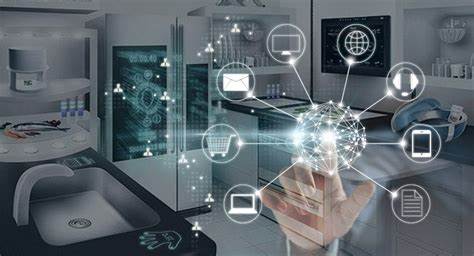 Home automation
IoT devices are a part of the larger concept of home automation, which can include lighting, heating and air conditioning, media and security systems and camera systems. Long-term benefits could include energy savings by automatically ensuring lights and electronics are turned off or by making the residents in the home aware of usage.
A smart home or automated home could be based on a platform or hubs that control smart devices and appliances. For instance, using Apple’s HomeKit, manufacturers can have their home products and accessories controlled by an application in iOS devices such as the iPhone and the Apple Watch. This could be a dedicated app or iOS native applications such as Siri.
Home automation
IoT devices are a part of the larger concept of home automation, which can include lighting, heating and air conditioning, media and security systems and camera systems. Long-term benefits could include energy savings by automatically ensuring lights and electronics are turned off or by making the residents in the home aware of usage.
A smart home or automated home could be based on a platform or hubs that control smart devices and appliances. For instance, using Apple’s HomeKit, manufacturers can have their home products and accessories controlled by an application in iOS devices such as the iPhone and the Apple Watch. This could be a dedicated app or iOS native applications such as Siri.
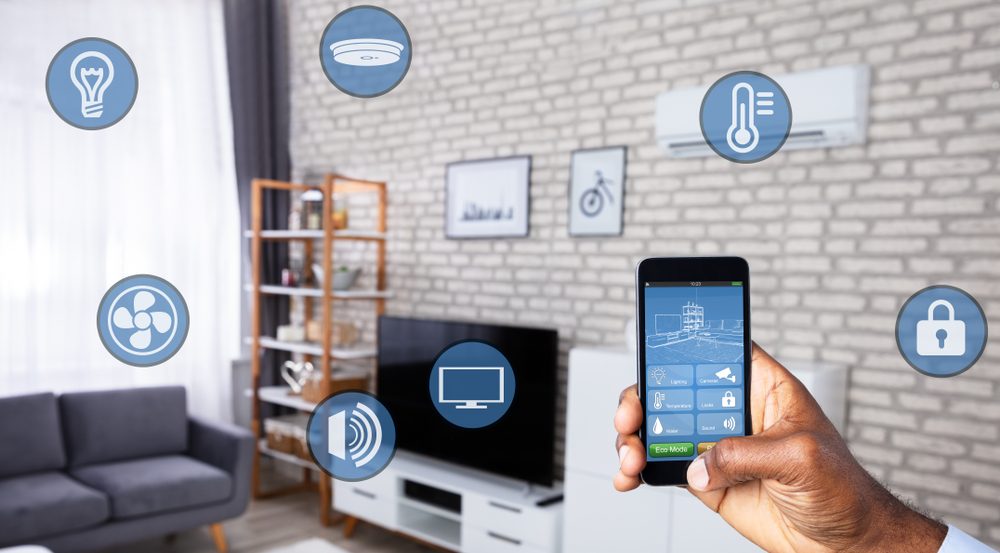 This can be demonstrated in the case of Lenovo’s Smart Home Essentials, which is a line of smart home devices that are controlled through Apple’s Home app or Siri without the need for a Wi-Fi bridge. There are also dedicated smart home hubs that are offered as standalone platforms to connect different smart home products.
These include the Amazon Echo, Google Home, Apple’s HomePod, and Samsung’s SmartThings Hub. In addition to the commercial systems, there are many non-proprietary, open source ecosystems, including Home Assistant, OpenHAB and Domoticz.
Elder care
This can be demonstrated in the case of Lenovo’s Smart Home Essentials, which is a line of smart home devices that are controlled through Apple’s Home app or Siri without the need for a Wi-Fi bridge. There are also dedicated smart home hubs that are offered as standalone platforms to connect different smart home products.
These include the Amazon Echo, Google Home, Apple’s HomePod, and Samsung’s SmartThings Hub. In addition to the commercial systems, there are many non-proprietary, open source ecosystems, including Home Assistant, OpenHAB and Domoticz.
Elder care
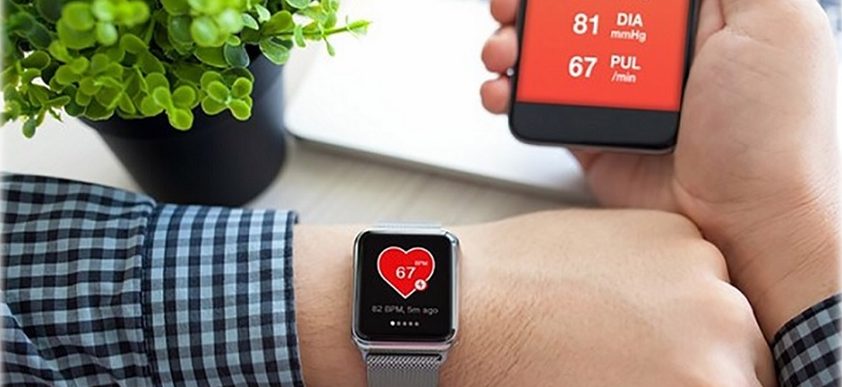 One key application of a smart home is to assist the elderly and disabled. These home systems use assistive technology to accommodate an owner’s specific disabilities. Voice control can assist users with sight and mobility limitations while alert systems can be connected directly to cochlear implants worn by hearing-impaired users.
They can also be equipped with additional safety features, including sensors that monitor for medical emergencies such as falls or seizures. Smart home technology applied in this way can provide users with more freedom and a higher quality of life.
One key application of a smart home is to assist the elderly and disabled. These home systems use assistive technology to accommodate an owner’s specific disabilities. Voice control can assist users with sight and mobility limitations while alert systems can be connected directly to cochlear implants worn by hearing-impaired users.
They can also be equipped with additional safety features, including sensors that monitor for medical emergencies such as falls or seizures. Smart home technology applied in this way can provide users with more freedom and a higher quality of life.
Organizations
The term “Enterprise IoT” refers to devices used in business and corporate settings. By 2019, it is estimated that the E-IoT will account for 9.1 billion devices.
Medical and healthcare
 The Internet of Medical Things (IoMT) is an application of the IoT for medical and health-related purposes, data collection and analysis for research, and monitoring. The IoMT has been referenced as “Smart Healthcare”, as the technology for creating a digitized healthcare system, connecting available medical resources and healthcare services.
IoT devices can be used to enable remote health monitoring and emergency notification systems. These health monitoring devices can range from blood pressure and heart rate monitors to advanced devices capable of monitoring specialized implants, such as pacemakers, Fitbit electronic wristbands, or advanced hearing aids.
Some hospitals have begun implementing “smart beds” that can detect when they are occupied and when a patient is attempting to get up. It can also adjust itself to ensure appropriate pressure and support are applied to the patient without the manual interaction of nurses. A 2015 Goldman Sachs report indicated that healthcare IoT devices “can save the United States more than $300 billion in annual healthcare expenditures by increasing revenue and decreasing cost.” Moreover, the use of mobile devices to support medical follow-up led to the creation of ‘m-health’, used analyzed health statistics.”
The Internet of Medical Things (IoMT) is an application of the IoT for medical and health-related purposes, data collection and analysis for research, and monitoring. The IoMT has been referenced as “Smart Healthcare”, as the technology for creating a digitized healthcare system, connecting available medical resources and healthcare services.
IoT devices can be used to enable remote health monitoring and emergency notification systems. These health monitoring devices can range from blood pressure and heart rate monitors to advanced devices capable of monitoring specialized implants, such as pacemakers, Fitbit electronic wristbands, or advanced hearing aids.
Some hospitals have begun implementing “smart beds” that can detect when they are occupied and when a patient is attempting to get up. It can also adjust itself to ensure appropriate pressure and support are applied to the patient without the manual interaction of nurses. A 2015 Goldman Sachs report indicated that healthcare IoT devices “can save the United States more than $300 billion in annual healthcare expenditures by increasing revenue and decreasing cost.” Moreover, the use of mobile devices to support medical follow-up led to the creation of ‘m-health’, used analyzed health statistics.”
 Specialized sensors can also be equipped within living spaces to monitor the health and general well-being of senior citizens, while also ensuring that proper treatment is being administered and assisting people to regain lost mobility via therapy as well. These sensors create a network of intelligent sensors that are able to collect, process, transfer, and analyze valuable information in different environments, such as connecting in-home monitoring devices to hospital-based systems.
Other consumer devices to encourage healthy living, such as connected scales or wearable heart monitors, are also a possibility with the IoT. End-to-end health monitoring IoT platforms are also available for antenatal and chronic patients, helping one manage health vitals and recurring medication requirements.
Advances in plastic and fabric electronics fabrication methods have enabled ultra-low cost, use-and-throw IoMT sensors. These sensors, along with the required RFID electronics, can be fabricated on paper or e-textiles for wireless powered disposable sensing devices.[60] Applications have been established for point-of-care medical diagnostics, where portability and low system-complexity is essential.
Specialized sensors can also be equipped within living spaces to monitor the health and general well-being of senior citizens, while also ensuring that proper treatment is being administered and assisting people to regain lost mobility via therapy as well. These sensors create a network of intelligent sensors that are able to collect, process, transfer, and analyze valuable information in different environments, such as connecting in-home monitoring devices to hospital-based systems.
Other consumer devices to encourage healthy living, such as connected scales or wearable heart monitors, are also a possibility with the IoT. End-to-end health monitoring IoT platforms are also available for antenatal and chronic patients, helping one manage health vitals and recurring medication requirements.
Advances in plastic and fabric electronics fabrication methods have enabled ultra-low cost, use-and-throw IoMT sensors. These sensors, along with the required RFID electronics, can be fabricated on paper or e-textiles for wireless powered disposable sensing devices.[60] Applications have been established for point-of-care medical diagnostics, where portability and low system-complexity is essential.
 As of 2018 IoMT was not only being applied in the clinical laboratory industry, but also in the healthcare and health insurance industries. IoMT in the healthcare industry is now permitting doctors, patients, and others, such as guardians of patients, nurses, families, and similar, to be part of a system, where patient records are saved in a database, allowing doctors and the rest of the medical staff to have access to patient information.
IoMT in the insurance industry provides access to better and new types of dynamic information. This includes sensor-based solutions such as biosensors, wearables, connected health devices, and mobile apps to track customer behavior. This can lead to more accurate underwriting and new pricing models.
The application of the IoT in healthcare plays a fundamental role in managing chronic diseases and in disease prevention and control. Remote monitoring is made possible through the connection of powerful wireless solutions. The connectivity enables health practitioners to capture patient’s data and apply complex algorithms in health data analysis.
As of 2018 IoMT was not only being applied in the clinical laboratory industry, but also in the healthcare and health insurance industries. IoMT in the healthcare industry is now permitting doctors, patients, and others, such as guardians of patients, nurses, families, and similar, to be part of a system, where patient records are saved in a database, allowing doctors and the rest of the medical staff to have access to patient information.
IoMT in the insurance industry provides access to better and new types of dynamic information. This includes sensor-based solutions such as biosensors, wearables, connected health devices, and mobile apps to track customer behavior. This can lead to more accurate underwriting and new pricing models.
The application of the IoT in healthcare plays a fundamental role in managing chronic diseases and in disease prevention and control. Remote monitoring is made possible through the connection of powerful wireless solutions. The connectivity enables health practitioners to capture patient’s data and apply complex algorithms in health data analysis.
 The Internet of Medical Things (IoMT) is an application of the IoT for medical and health-related purposes, data collection and analysis for research, and monitoring. The IoMT has been referenced as “Smart Healthcare”, as the technology for creating a digitized healthcare system, connecting available medical resources and healthcare services.
IoT devices can be used to enable remote health monitoring and emergency notification systems. These health monitoring devices can range from blood pressure and heart rate monitors to advanced devices capable of monitoring specialized implants, such as pacemakers, Fitbit electronic wristbands, or advanced hearing aids.
Some hospitals have begun implementing “smart beds” that can detect when they are occupied and when a patient is attempting to get up. It can also adjust itself to ensure appropriate pressure and support are applied to the patient without the manual interaction of nurses. A 2015 Goldman Sachs report indicated that healthcare IoT devices “can save the United States more than $300 billion in annual healthcare expenditures by increasing revenue and decreasing cost.” Moreover, the use of mobile devices to support medical follow-up led to the creation of ‘m-health’, used analyzed health statistics.”
The Internet of Medical Things (IoMT) is an application of the IoT for medical and health-related purposes, data collection and analysis for research, and monitoring. The IoMT has been referenced as “Smart Healthcare”, as the technology for creating a digitized healthcare system, connecting available medical resources and healthcare services.
IoT devices can be used to enable remote health monitoring and emergency notification systems. These health monitoring devices can range from blood pressure and heart rate monitors to advanced devices capable of monitoring specialized implants, such as pacemakers, Fitbit electronic wristbands, or advanced hearing aids.
Some hospitals have begun implementing “smart beds” that can detect when they are occupied and when a patient is attempting to get up. It can also adjust itself to ensure appropriate pressure and support are applied to the patient without the manual interaction of nurses. A 2015 Goldman Sachs report indicated that healthcare IoT devices “can save the United States more than $300 billion in annual healthcare expenditures by increasing revenue and decreasing cost.” Moreover, the use of mobile devices to support medical follow-up led to the creation of ‘m-health’, used analyzed health statistics.”
 Specialized sensors can also be equipped within living spaces to monitor the health and general well-being of senior citizens, while also ensuring that proper treatment is being administered and assisting people to regain lost mobility via therapy as well. These sensors create a network of intelligent sensors that are able to collect, process, transfer, and analyze valuable information in different environments, such as connecting in-home monitoring devices to hospital-based systems.
Other consumer devices to encourage healthy living, such as connected scales or wearable heart monitors, are also a possibility with the IoT. End-to-end health monitoring IoT platforms are also available for antenatal and chronic patients, helping one manage health vitals and recurring medication requirements.
Advances in plastic and fabric electronics fabrication methods have enabled ultra-low cost, use-and-throw IoMT sensors. These sensors, along with the required RFID electronics, can be fabricated on paper or e-textiles for wireless powered disposable sensing devices.[60] Applications have been established for point-of-care medical diagnostics, where portability and low system-complexity is essential.
Specialized sensors can also be equipped within living spaces to monitor the health and general well-being of senior citizens, while also ensuring that proper treatment is being administered and assisting people to regain lost mobility via therapy as well. These sensors create a network of intelligent sensors that are able to collect, process, transfer, and analyze valuable information in different environments, such as connecting in-home monitoring devices to hospital-based systems.
Other consumer devices to encourage healthy living, such as connected scales or wearable heart monitors, are also a possibility with the IoT. End-to-end health monitoring IoT platforms are also available for antenatal and chronic patients, helping one manage health vitals and recurring medication requirements.
Advances in plastic and fabric electronics fabrication methods have enabled ultra-low cost, use-and-throw IoMT sensors. These sensors, along with the required RFID electronics, can be fabricated on paper or e-textiles for wireless powered disposable sensing devices.[60] Applications have been established for point-of-care medical diagnostics, where portability and low system-complexity is essential.
 As of 2018 IoMT was not only being applied in the clinical laboratory industry, but also in the healthcare and health insurance industries. IoMT in the healthcare industry is now permitting doctors, patients, and others, such as guardians of patients, nurses, families, and similar, to be part of a system, where patient records are saved in a database, allowing doctors and the rest of the medical staff to have access to patient information.
IoMT in the insurance industry provides access to better and new types of dynamic information. This includes sensor-based solutions such as biosensors, wearables, connected health devices, and mobile apps to track customer behavior. This can lead to more accurate underwriting and new pricing models.
The application of the IoT in healthcare plays a fundamental role in managing chronic diseases and in disease prevention and control. Remote monitoring is made possible through the connection of powerful wireless solutions. The connectivity enables health practitioners to capture patient’s data and apply complex algorithms in health data analysis.
As of 2018 IoMT was not only being applied in the clinical laboratory industry, but also in the healthcare and health insurance industries. IoMT in the healthcare industry is now permitting doctors, patients, and others, such as guardians of patients, nurses, families, and similar, to be part of a system, where patient records are saved in a database, allowing doctors and the rest of the medical staff to have access to patient information.
IoMT in the insurance industry provides access to better and new types of dynamic information. This includes sensor-based solutions such as biosensors, wearables, connected health devices, and mobile apps to track customer behavior. This can lead to more accurate underwriting and new pricing models.
The application of the IoT in healthcare plays a fundamental role in managing chronic diseases and in disease prevention and control. Remote monitoring is made possible through the connection of powerful wireless solutions. The connectivity enables health practitioners to capture patient’s data and apply complex algorithms in health data analysis.
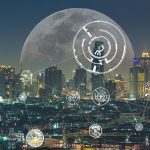
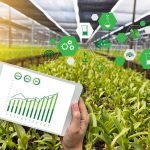
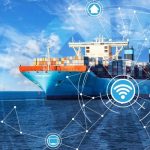


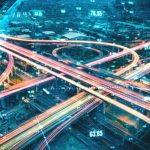
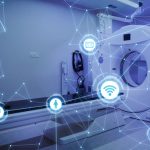
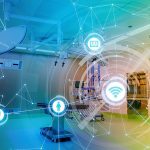

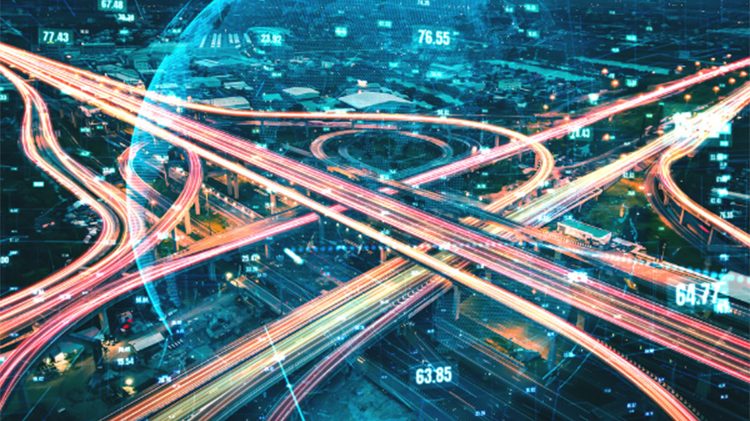 Transportation
The IoT can assist in the integration of communications, control, and information processing across various transportation systems. Application of the IoT extends to all aspects of transportation systems (i.e., the vehicle, the infrastructure, and the driver or user).
Dynamic interaction between these components of a transport system enables inter- and intra-vehicular communication, smart traffic control, smart parking, electronic toll collection systems, logistics and fleet management, vehicle control, safety, and road assistance.
V2X communications
In vehicular communication systems, vehicle-to-everything communication (V2X), consists of three main components: vehicle-to-vehicle communication (V2V), vehicle-to-infrastructure communication (V2I) and vehicle to pedestrian communications (V2P). V2X is the first step to autonomous driving and connected road infrastructure.
Transportation
The IoT can assist in the integration of communications, control, and information processing across various transportation systems. Application of the IoT extends to all aspects of transportation systems (i.e., the vehicle, the infrastructure, and the driver or user).
Dynamic interaction between these components of a transport system enables inter- and intra-vehicular communication, smart traffic control, smart parking, electronic toll collection systems, logistics and fleet management, vehicle control, safety, and road assistance.
V2X communications
In vehicular communication systems, vehicle-to-everything communication (V2X), consists of three main components: vehicle-to-vehicle communication (V2V), vehicle-to-infrastructure communication (V2I) and vehicle to pedestrian communications (V2P). V2X is the first step to autonomous driving and connected road infrastructure.
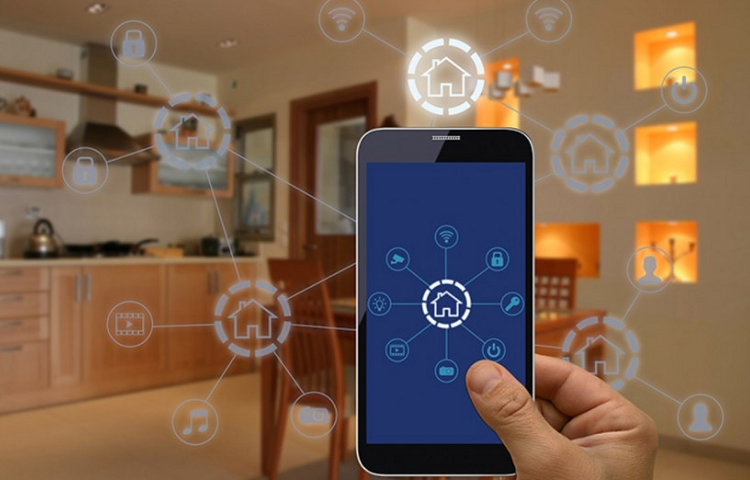 Home automation
IoT devices can be used to monitor and control the mechanical, electrical and electronic systems used in various types of buildings (e.g., public and private, industrial, institutions, or residential) in home automation and building automation systems. In this context, three main areas are being covered in literature:
Home automation
IoT devices can be used to monitor and control the mechanical, electrical and electronic systems used in various types of buildings (e.g., public and private, industrial, institutions, or residential) in home automation and building automation systems. In this context, three main areas are being covered in literature:
- The integration of the Internet with building energy management systems to create energy-efficient and IOT-driven “smart buildings”.
- The possible means of real-time monitoring for reducing energy consumption and monitoring occupant behaviors.
- The integration of smart devices in the built environment and how they might be used in future applications.
Industrial
Also known as IIoT, industrial IoT devices acquire and analyze data from connected equipment, operational technology (OT), locations, and people. Combined with operational technology (OT) monitoring devices, IIoT helps regulate and monitor industrial systems. Also, the same implementation can be carried out for automated record updates of asset placement in industrial storage units as the size of the assets can vary from a small screw to the whole motor spare part, and misplacement of such assets can cause a loss of manpower time and money.
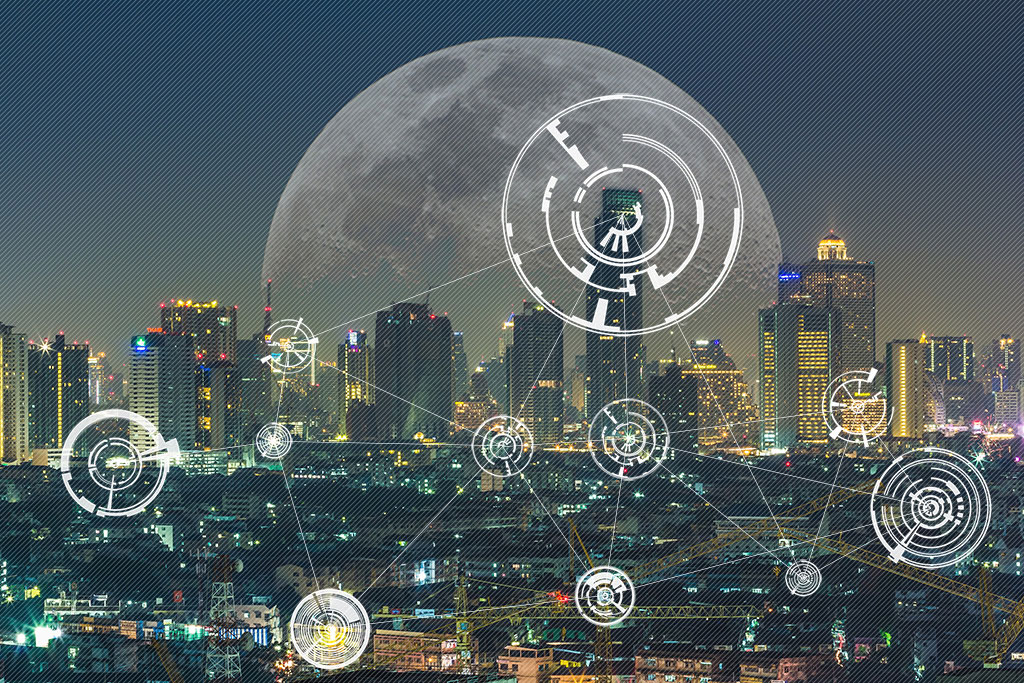 Manufacturing
The IoT can connect various manufacturing devices equipped with sensing, identification, processing, communication, actuation, and networking capabilities. Network control and management of manufacturing equipment, asset and situation management, or manufacturing process control allow IoT to be used for industrial applications and smart manufacturing. IoT intelligent systems enable rapid manufacturing and optimization of new products and rapid response to product demands.
Digital control systems to automate process controls, operator tools and service information systems to optimize plant safety and security are within the purview of the IIoT. IoT can also be applied to asset management via predictive maintenance, statistical evaluation, and measurements to maximize reliability. Industrial management systems can be integrated with smart grids, enabling energy optimization. Measurements, automated controls, plant optimization, health and safety management, and other functions are provided by networked sensors.
In addition to general manufacturing, IoT is also used for processes in the industrialization of construction.
Manufacturing
The IoT can connect various manufacturing devices equipped with sensing, identification, processing, communication, actuation, and networking capabilities. Network control and management of manufacturing equipment, asset and situation management, or manufacturing process control allow IoT to be used for industrial applications and smart manufacturing. IoT intelligent systems enable rapid manufacturing and optimization of new products and rapid response to product demands.
Digital control systems to automate process controls, operator tools and service information systems to optimize plant safety and security are within the purview of the IIoT. IoT can also be applied to asset management via predictive maintenance, statistical evaluation, and measurements to maximize reliability. Industrial management systems can be integrated with smart grids, enabling energy optimization. Measurements, automated controls, plant optimization, health and safety management, and other functions are provided by networked sensors.
In addition to general manufacturing, IoT is also used for processes in the industrialization of construction.
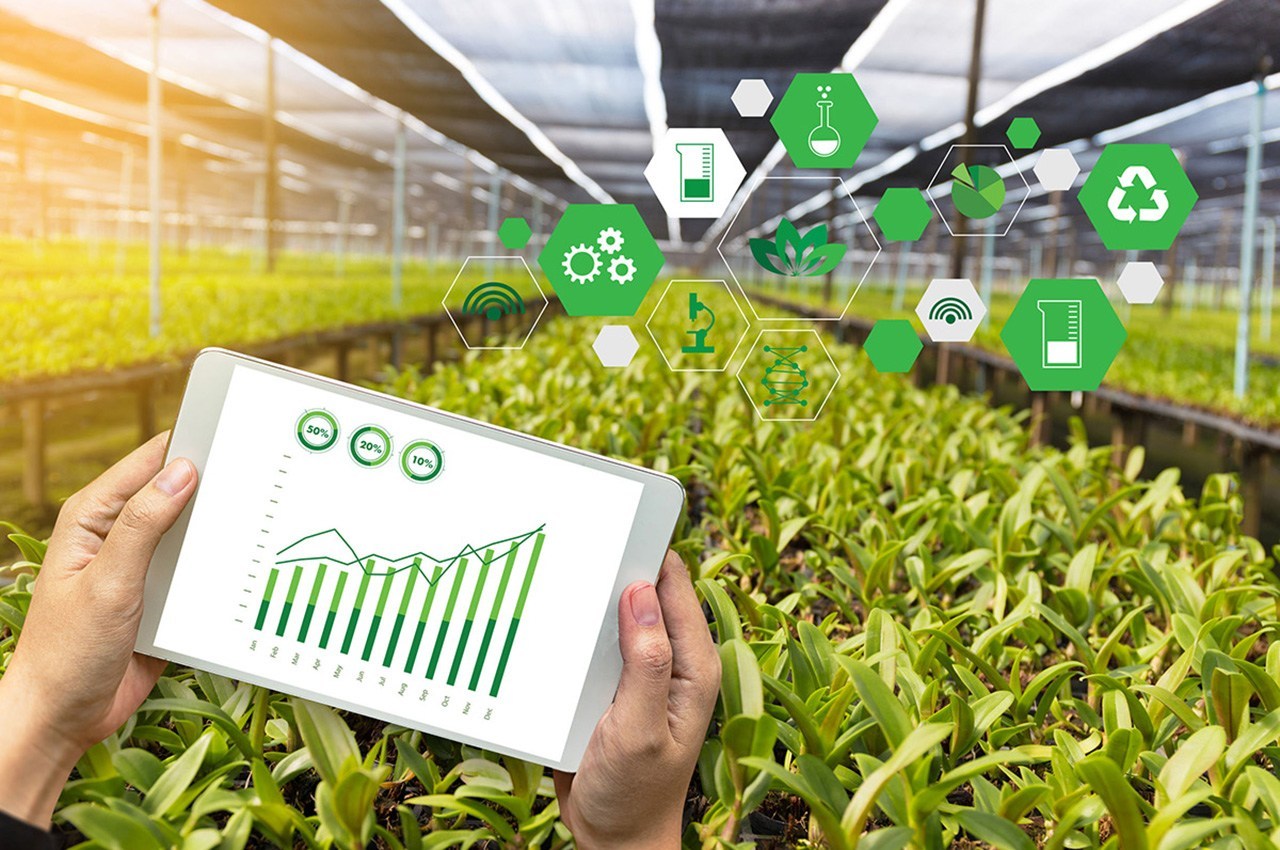 Agriculture
There are numerous IoT applications in farming, such as collecting data on temperature, rainfall, humidity, wind speed, pest infestation, and soil content. This data can be used to automate farming techniques, take informed decisions to improve quality and quantity, minimize risk and waste, and reduce the effort required to manage crops. For example, farmers can now monitor soil temperature and moisture from afar and even apply IoT-acquired data to precision fertilization programs. The overall goal is that data from sensors, coupled with the farmer’s knowledge and intuition about his or her farm, can help increase farm productivity, and also help reduce costs.
In August 2018, Toyota Tsusho began a partnership with Microsoft to create fish farming tools using the Microsoft Azure application suite for IoT technologies related to water management. Developed in part by researchers from Kindai University, the water pump mechanisms use artificial intelligence to count the number of fish on a conveyor belt, analyze the number of fish, and deduce the effectiveness of water flow from the data the fish provide. The FarmBeats project from Microsoft Research that uses TV white space to connect farms is also a part of the Azure Marketplace now.
Agriculture
There are numerous IoT applications in farming, such as collecting data on temperature, rainfall, humidity, wind speed, pest infestation, and soil content. This data can be used to automate farming techniques, take informed decisions to improve quality and quantity, minimize risk and waste, and reduce the effort required to manage crops. For example, farmers can now monitor soil temperature and moisture from afar and even apply IoT-acquired data to precision fertilization programs. The overall goal is that data from sensors, coupled with the farmer’s knowledge and intuition about his or her farm, can help increase farm productivity, and also help reduce costs.
In August 2018, Toyota Tsusho began a partnership with Microsoft to create fish farming tools using the Microsoft Azure application suite for IoT technologies related to water management. Developed in part by researchers from Kindai University, the water pump mechanisms use artificial intelligence to count the number of fish on a conveyor belt, analyze the number of fish, and deduce the effectiveness of water flow from the data the fish provide. The FarmBeats project from Microsoft Research that uses TV white space to connect farms is also a part of the Azure Marketplace now.
 Maritime
IoT devices are in use to monitor the environments and systems of boats and yachts. Many pleasure boats are left unattended for days in summer, and months in winter so such devices provide valuable early alerts of boat flooding, fire, and deep discharge of batteries.
The use of global internet data networks such as Sigfox, combined with long-life batteries, and microelectronics allows the engine rooms, bilge, and batteries to be constantly monitored and reported to connected Android & Apple applications for example.
Maritime
IoT devices are in use to monitor the environments and systems of boats and yachts. Many pleasure boats are left unattended for days in summer, and months in winter so such devices provide valuable early alerts of boat flooding, fire, and deep discharge of batteries.
The use of global internet data networks such as Sigfox, combined with long-life batteries, and microelectronics allows the engine rooms, bilge, and batteries to be constantly monitored and reported to connected Android & Apple applications for example.
Internet of Things
(Billion) smartphone users
0
(Billion) Internet-connected things
0
($T) total economic impact of IoT
0
Trends and characteristics
The IoT’s major significant trend in recent years is the explosive growth of devices connected and controlled via the Internet. The wide range of applications for IoT technology mean that the specifics can be very different from one device to the next but there are basic characteristics shared by most.
The IoT creates opportunities for more direct integration of the physical world into computer-based systems, resulting in efficiency improvements, economic benefits, and reduced human exertions.
The number of IoT devices increased 31% year-over-year to 8.4 billion in the year 2017 and it is estimated that there will be 30 billion devices by 2020.
Intelligence
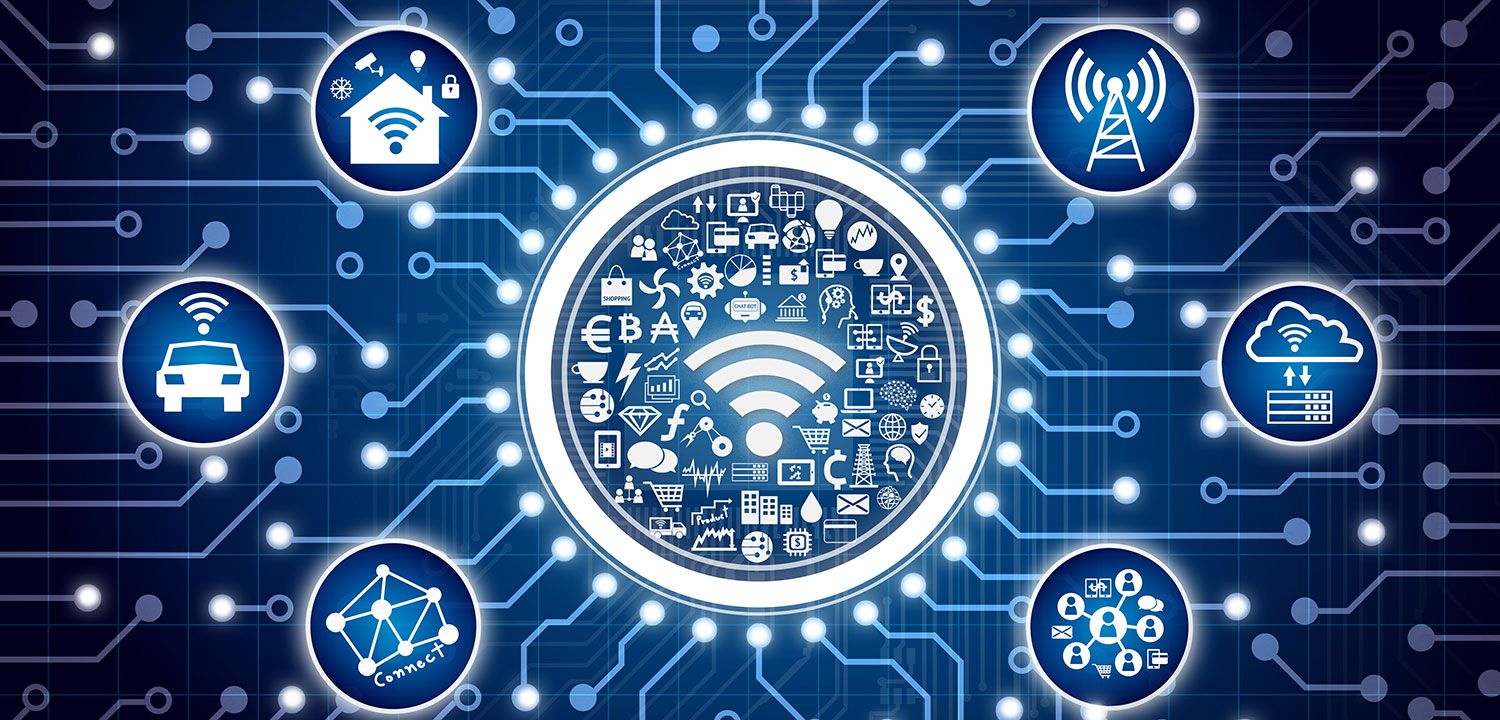 Ambient intelligence and autonomous control are not part of the original concept of the Internet of things. Ambient intelligence and autonomous control do not necessarily require Internet structures, either. However, there is a shift in research (by companies such as Intel) to integrate the concepts of the IoT and autonomous control, with initial outcomes towards this direction considering objects as the driving force for autonomous IoT.
An approach in this context is deep reinforcement learning where most of IoT systems provide a dynamic and interactive environment. Training an agent (i.e., IoT device) to behave smartly in such an environment cannot be addressed by conventional machine learning algorithms such as supervised learning. By reinforcement learning approach, a learning agent can sense the environment’s state (e.g., sensing home temperature), perform actions (e.g., turn HVAC on or off) and learn through the maximizing accumulated rewards it receives in long term.
Ambient intelligence and autonomous control are not part of the original concept of the Internet of things. Ambient intelligence and autonomous control do not necessarily require Internet structures, either. However, there is a shift in research (by companies such as Intel) to integrate the concepts of the IoT and autonomous control, with initial outcomes towards this direction considering objects as the driving force for autonomous IoT.
An approach in this context is deep reinforcement learning where most of IoT systems provide a dynamic and interactive environment. Training an agent (i.e., IoT device) to behave smartly in such an environment cannot be addressed by conventional machine learning algorithms such as supervised learning. By reinforcement learning approach, a learning agent can sense the environment’s state (e.g., sensing home temperature), perform actions (e.g., turn HVAC on or off) and learn through the maximizing accumulated rewards it receives in long term.
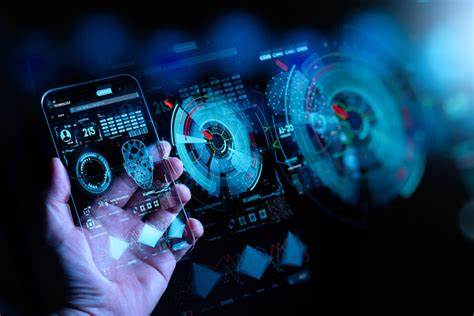 IoT intelligence can be offered at three levels: IoT devices, Edge/Fog nodes, and cloud computing. The need for intelligent control and decision at each level depends on the time sensitiveness of the IoT application. For example, an autonomous vehicle’s camera needs to make real-time obstacle detection to avoid an accident. This fast decision making would not be possible through transferring data from the vehicle to cloud instances and return the predictions back to the vehicle. Instead, all the operation should be performed locally in the vehicle.
Integrating advanced machine learning algorithms including deep learning into IoT devices is an active research area to make smart objects closer to reality. Moreover, it is possible to get the most value out of IoT deployments through analyzing IoT data, extracting hidden information, and predicting control decisions. A wide variety of machine learning techniques have been used in IoT domain ranging from traditional methods such as regression, support vector machine, and random forest to advanced ones such as convolutional neural networks, LSTM, and variational autoencoder.
IoT intelligence can be offered at three levels: IoT devices, Edge/Fog nodes, and cloud computing. The need for intelligent control and decision at each level depends on the time sensitiveness of the IoT application. For example, an autonomous vehicle’s camera needs to make real-time obstacle detection to avoid an accident. This fast decision making would not be possible through transferring data from the vehicle to cloud instances and return the predictions back to the vehicle. Instead, all the operation should be performed locally in the vehicle.
Integrating advanced machine learning algorithms including deep learning into IoT devices is an active research area to make smart objects closer to reality. Moreover, it is possible to get the most value out of IoT deployments through analyzing IoT data, extracting hidden information, and predicting control decisions. A wide variety of machine learning techniques have been used in IoT domain ranging from traditional methods such as regression, support vector machine, and random forest to advanced ones such as convolutional neural networks, LSTM, and variational autoencoder.
Architecture
IoT system architecture, in its simplistic view, consists of three tiers: Tier 1: Devices, Tier 2: the Edge Gateway, and Tier 3: the Cloud.
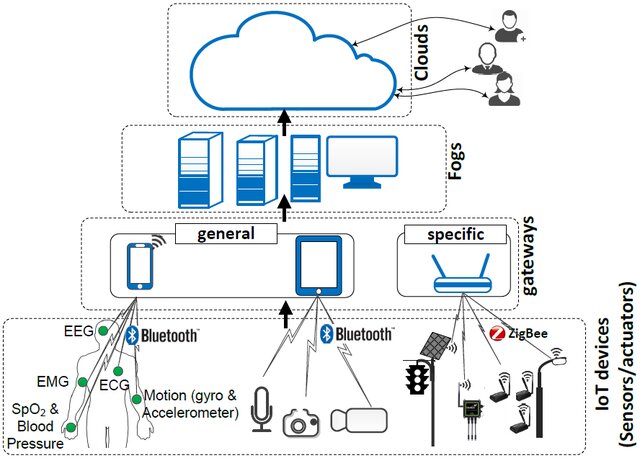 Devices include networked things, such as the sensors and actuators found in IoT equipment, particularly those that use protocols such as Modbus, Bluetooth, Zigbee, or proprietary protocols, to connect to an Edge Gateway.
The Edge Gateway layer consists of sensor data aggregation systems called Edge Gateways that provide functionality, such as pre-processing of the data, securing connectivity to cloud, using systems such as WebSockets, the event hub, and, even in some cases, edge analytics or fog computing. Edge Gateway layer is also required to give a common view of the devices to the upper layers to facilitate in easier management.
The final tier includes the cloud application built for IoT using the microservices architecture, which are usually polyglot and inherently secure in nature using HTTPS/OAuth. It includes various database systems that store sensor data, such as time series databases or asset stores using backend data storage systems (e.g. Cassandra, PostgreSQL). The cloud tier in most cloud-based IoT system features event queuing and messaging system that handles communication that transpires in all tiers. Some experts classified the three-tiers in the IoT system as edge, platform, and enterprise and these are connected by proximity network, access network, and service network, respectively.
Devices include networked things, such as the sensors and actuators found in IoT equipment, particularly those that use protocols such as Modbus, Bluetooth, Zigbee, or proprietary protocols, to connect to an Edge Gateway.
The Edge Gateway layer consists of sensor data aggregation systems called Edge Gateways that provide functionality, such as pre-processing of the data, securing connectivity to cloud, using systems such as WebSockets, the event hub, and, even in some cases, edge analytics or fog computing. Edge Gateway layer is also required to give a common view of the devices to the upper layers to facilitate in easier management.
The final tier includes the cloud application built for IoT using the microservices architecture, which are usually polyglot and inherently secure in nature using HTTPS/OAuth. It includes various database systems that store sensor data, such as time series databases or asset stores using backend data storage systems (e.g. Cassandra, PostgreSQL). The cloud tier in most cloud-based IoT system features event queuing and messaging system that handles communication that transpires in all tiers. Some experts classified the three-tiers in the IoT system as edge, platform, and enterprise and these are connected by proximity network, access network, and service network, respectively.
 Network architecture
The Internet of things requires huge scalability in the network space to handle the surge of devices. IETF 6LoWPAN can be used to connect devices to IP networks. With billions of devices being added to the Internet space, IPv6 will play a major role in handling the network layer scalability. IETF’s Constrained Application Protocol, ZeroMQ, and MQTT can provide lightweight data transport. In practice many groups of IoT devices are hidden behind gateway nodes and may not have unique addresses. Also the vision of everything-interconnected is not needed for most applications as it is mainly the data which need interconnecting at a higher layer.
Fog computing is a viable alternative to prevent such a large burst of data flow through the Internet. The edge devices’ computation power to analyze and process data is extremely limited. Limited processing power is a key attribute of IoT devices as their purpose is to supply data about physical objects while remaining autonomous. Heavy processing requirements use more battery power harming IoT’s ability to operate. Scalability is easy because IoT devices simply supply data through the internet to a server with sufficient processing power.
Decentralized IoT
Network architecture
The Internet of things requires huge scalability in the network space to handle the surge of devices. IETF 6LoWPAN can be used to connect devices to IP networks. With billions of devices being added to the Internet space, IPv6 will play a major role in handling the network layer scalability. IETF’s Constrained Application Protocol, ZeroMQ, and MQTT can provide lightweight data transport. In practice many groups of IoT devices are hidden behind gateway nodes and may not have unique addresses. Also the vision of everything-interconnected is not needed for most applications as it is mainly the data which need interconnecting at a higher layer.
Fog computing is a viable alternative to prevent such a large burst of data flow through the Internet. The edge devices’ computation power to analyze and process data is extremely limited. Limited processing power is a key attribute of IoT devices as their purpose is to supply data about physical objects while remaining autonomous. Heavy processing requirements use more battery power harming IoT’s ability to operate. Scalability is easy because IoT devices simply supply data through the internet to a server with sufficient processing power.
Decentralized IoT
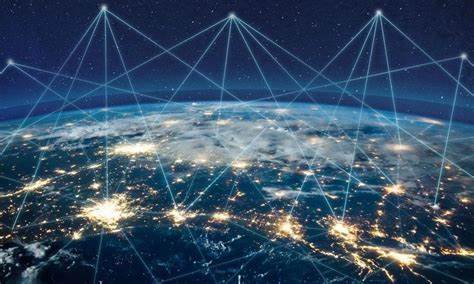 Decentralized Internet of things, or decentralized IoT, is a modified IoT which utilizes fog computing to handle and balance requests of connected IoT devices in order to reduce loading on the cloud servers and improve responsiveness for latency-sensitive IoT applications like vital signs monitoring of patients, vehicle-to-vehicle communication of autonomous driving, and critical failure detection of industrial devices. Performance is improved, especially for huge IoT systems with millions of nodes.
Conventional IoT is connected via a mesh network and led by a major head node (centralized controller). The head node decides how a data is created, stored, and transmitted. In contrast, decentralized IoT attempts to divide IoT systems into smaller divisions. The head node authorizes partial decision-making power to lower level sub-nodes under mutual agreed policy.
Some approached to decentralized IoT attempts to address the limited bandwidth and hashing capacity of battery powered or wireless IoT devices via blockchain.
Decentralized Internet of things, or decentralized IoT, is a modified IoT which utilizes fog computing to handle and balance requests of connected IoT devices in order to reduce loading on the cloud servers and improve responsiveness for latency-sensitive IoT applications like vital signs monitoring of patients, vehicle-to-vehicle communication of autonomous driving, and critical failure detection of industrial devices. Performance is improved, especially for huge IoT systems with millions of nodes.
Conventional IoT is connected via a mesh network and led by a major head node (centralized controller). The head node decides how a data is created, stored, and transmitted. In contrast, decentralized IoT attempts to divide IoT systems into smaller divisions. The head node authorizes partial decision-making power to lower level sub-nodes under mutual agreed policy.
Some approached to decentralized IoT attempts to address the limited bandwidth and hashing capacity of battery powered or wireless IoT devices via blockchain.
 Devices include networked things, such as the sensors and actuators found in IoT equipment, particularly those that use protocols such as Modbus, Bluetooth, Zigbee, or proprietary protocols, to connect to an Edge Gateway.
The Edge Gateway layer consists of sensor data aggregation systems called Edge Gateways that provide functionality, such as pre-processing of the data, securing connectivity to cloud, using systems such as WebSockets, the event hub, and, even in some cases, edge analytics or fog computing. Edge Gateway layer is also required to give a common view of the devices to the upper layers to facilitate in easier management.
The final tier includes the cloud application built for IoT using the microservices architecture, which are usually polyglot and inherently secure in nature using HTTPS/OAuth. It includes various database systems that store sensor data, such as time series databases or asset stores using backend data storage systems (e.g. Cassandra, PostgreSQL). The cloud tier in most cloud-based IoT system features event queuing and messaging system that handles communication that transpires in all tiers. Some experts classified the three-tiers in the IoT system as edge, platform, and enterprise and these are connected by proximity network, access network, and service network, respectively.
Devices include networked things, such as the sensors and actuators found in IoT equipment, particularly those that use protocols such as Modbus, Bluetooth, Zigbee, or proprietary protocols, to connect to an Edge Gateway.
The Edge Gateway layer consists of sensor data aggregation systems called Edge Gateways that provide functionality, such as pre-processing of the data, securing connectivity to cloud, using systems such as WebSockets, the event hub, and, even in some cases, edge analytics or fog computing. Edge Gateway layer is also required to give a common view of the devices to the upper layers to facilitate in easier management.
The final tier includes the cloud application built for IoT using the microservices architecture, which are usually polyglot and inherently secure in nature using HTTPS/OAuth. It includes various database systems that store sensor data, such as time series databases or asset stores using backend data storage systems (e.g. Cassandra, PostgreSQL). The cloud tier in most cloud-based IoT system features event queuing and messaging system that handles communication that transpires in all tiers. Some experts classified the three-tiers in the IoT system as edge, platform, and enterprise and these are connected by proximity network, access network, and service network, respectively.
 Network architecture
The Internet of things requires huge scalability in the network space to handle the surge of devices. IETF 6LoWPAN can be used to connect devices to IP networks. With billions of devices being added to the Internet space, IPv6 will play a major role in handling the network layer scalability. IETF’s Constrained Application Protocol, ZeroMQ, and MQTT can provide lightweight data transport. In practice many groups of IoT devices are hidden behind gateway nodes and may not have unique addresses. Also the vision of everything-interconnected is not needed for most applications as it is mainly the data which need interconnecting at a higher layer.
Fog computing is a viable alternative to prevent such a large burst of data flow through the Internet. The edge devices’ computation power to analyze and process data is extremely limited. Limited processing power is a key attribute of IoT devices as their purpose is to supply data about physical objects while remaining autonomous. Heavy processing requirements use more battery power harming IoT’s ability to operate. Scalability is easy because IoT devices simply supply data through the internet to a server with sufficient processing power.
Decentralized IoT
Network architecture
The Internet of things requires huge scalability in the network space to handle the surge of devices. IETF 6LoWPAN can be used to connect devices to IP networks. With billions of devices being added to the Internet space, IPv6 will play a major role in handling the network layer scalability. IETF’s Constrained Application Protocol, ZeroMQ, and MQTT can provide lightweight data transport. In practice many groups of IoT devices are hidden behind gateway nodes and may not have unique addresses. Also the vision of everything-interconnected is not needed for most applications as it is mainly the data which need interconnecting at a higher layer.
Fog computing is a viable alternative to prevent such a large burst of data flow through the Internet. The edge devices’ computation power to analyze and process data is extremely limited. Limited processing power is a key attribute of IoT devices as their purpose is to supply data about physical objects while remaining autonomous. Heavy processing requirements use more battery power harming IoT’s ability to operate. Scalability is easy because IoT devices simply supply data through the internet to a server with sufficient processing power.
Decentralized IoT
 Decentralized Internet of things, or decentralized IoT, is a modified IoT which utilizes fog computing to handle and balance requests of connected IoT devices in order to reduce loading on the cloud servers and improve responsiveness for latency-sensitive IoT applications like vital signs monitoring of patients, vehicle-to-vehicle communication of autonomous driving, and critical failure detection of industrial devices. Performance is improved, especially for huge IoT systems with millions of nodes.
Conventional IoT is connected via a mesh network and led by a major head node (centralized controller). The head node decides how a data is created, stored, and transmitted. In contrast, decentralized IoT attempts to divide IoT systems into smaller divisions. The head node authorizes partial decision-making power to lower level sub-nodes under mutual agreed policy.
Some approached to decentralized IoT attempts to address the limited bandwidth and hashing capacity of battery powered or wireless IoT devices via blockchain.
Decentralized Internet of things, or decentralized IoT, is a modified IoT which utilizes fog computing to handle and balance requests of connected IoT devices in order to reduce loading on the cloud servers and improve responsiveness for latency-sensitive IoT applications like vital signs monitoring of patients, vehicle-to-vehicle communication of autonomous driving, and critical failure detection of industrial devices. Performance is improved, especially for huge IoT systems with millions of nodes.
Conventional IoT is connected via a mesh network and led by a major head node (centralized controller). The head node decides how a data is created, stored, and transmitted. In contrast, decentralized IoT attempts to divide IoT systems into smaller divisions. The head node authorizes partial decision-making power to lower level sub-nodes under mutual agreed policy.
Some approached to decentralized IoT attempts to address the limited bandwidth and hashing capacity of battery powered or wireless IoT devices via blockchain. 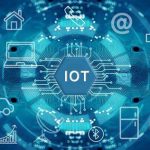
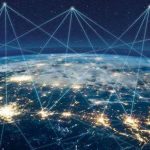


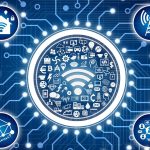
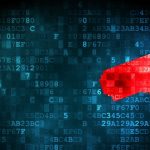
Government regulation
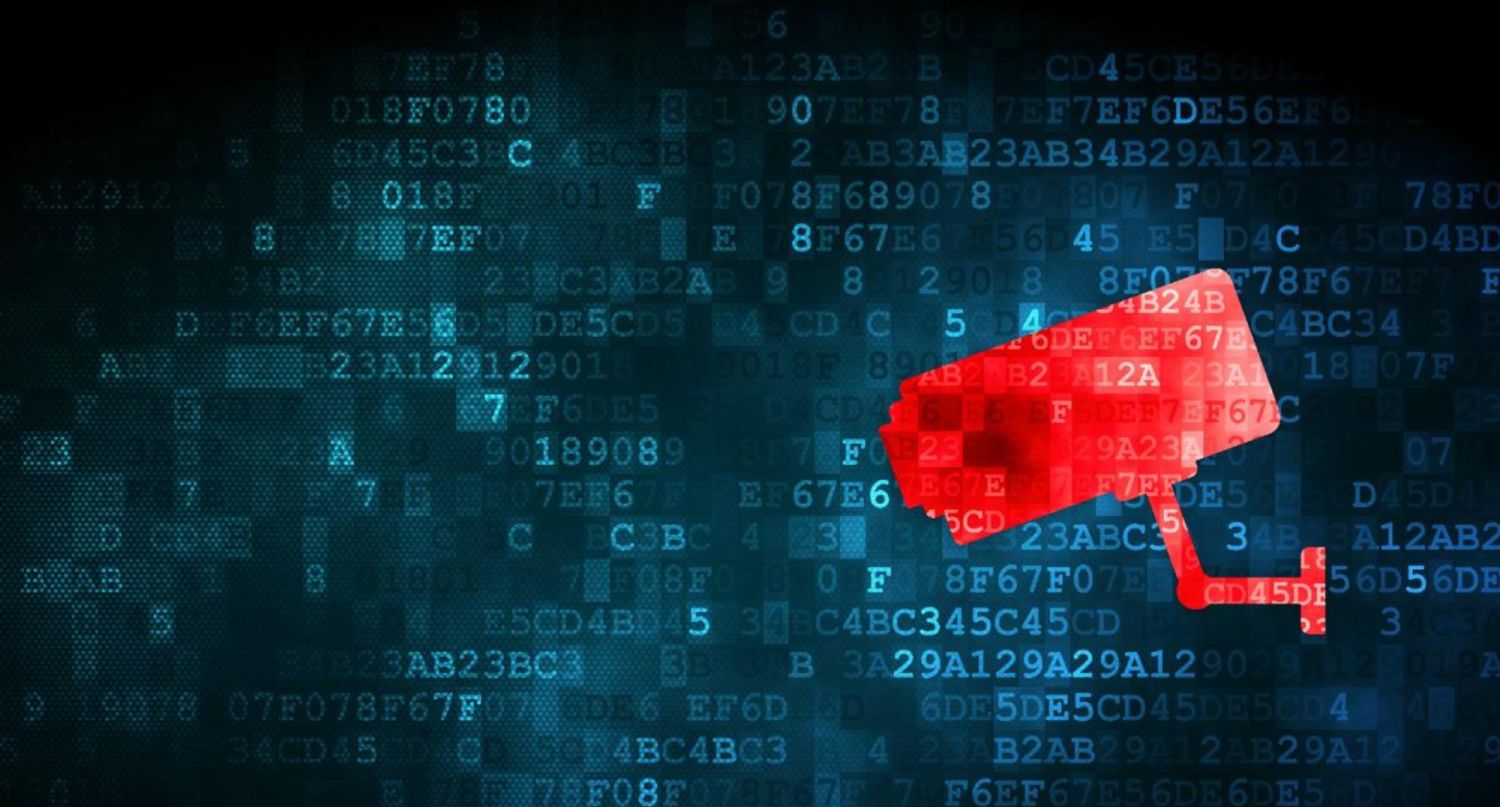 One of the key drivers of the IoT is data. The success of the idea of connecting devices to make them more efficient is dependent upon access to and storage & processing of data. For this purpose, companies working on the IoT collect data from multiple sources and store it in their cloud network for further processing. This leaves the door wide open for privacy and security dangers and single point vulnerability of multiple systems.
The other issues pertain to consumer choice and ownership of data and how it is used. Though still in their infancy, regulations and governance regarding these issues of privacy, security, and data ownership continue to develop. IoT regulation depends on the country. Some examples of legislation that is relevant to privacy and data collection are: the US Privacy Act of 1974, OECD Guidelines on the Protection of Privacy and Transborder Flows of Personal Data of 1980, and the EU Directive 95/46/EC of 1995.
One of the key drivers of the IoT is data. The success of the idea of connecting devices to make them more efficient is dependent upon access to and storage & processing of data. For this purpose, companies working on the IoT collect data from multiple sources and store it in their cloud network for further processing. This leaves the door wide open for privacy and security dangers and single point vulnerability of multiple systems.
The other issues pertain to consumer choice and ownership of data and how it is used. Though still in their infancy, regulations and governance regarding these issues of privacy, security, and data ownership continue to develop. IoT regulation depends on the country. Some examples of legislation that is relevant to privacy and data collection are: the US Privacy Act of 1974, OECD Guidelines on the Protection of Privacy and Transborder Flows of Personal Data of 1980, and the EU Directive 95/46/EC of 1995. Criticism, problems and controversies
Platform fragmentation; Privacy, autonomy, and control; Data storage; Security; Safety; Design; Environmental sustainibility impact; Intentional obsolescence of devices; Confusing terminology;
